Precision Agronomist Phil Long answers common questions related to uneven corn emergence, scouting tips and thoughts on changes to the planting plan at this stage of #Plant21.
-
Latham Hi‑Tech Seeds
#AskTheAgronomist: Uneven Corn Emergence
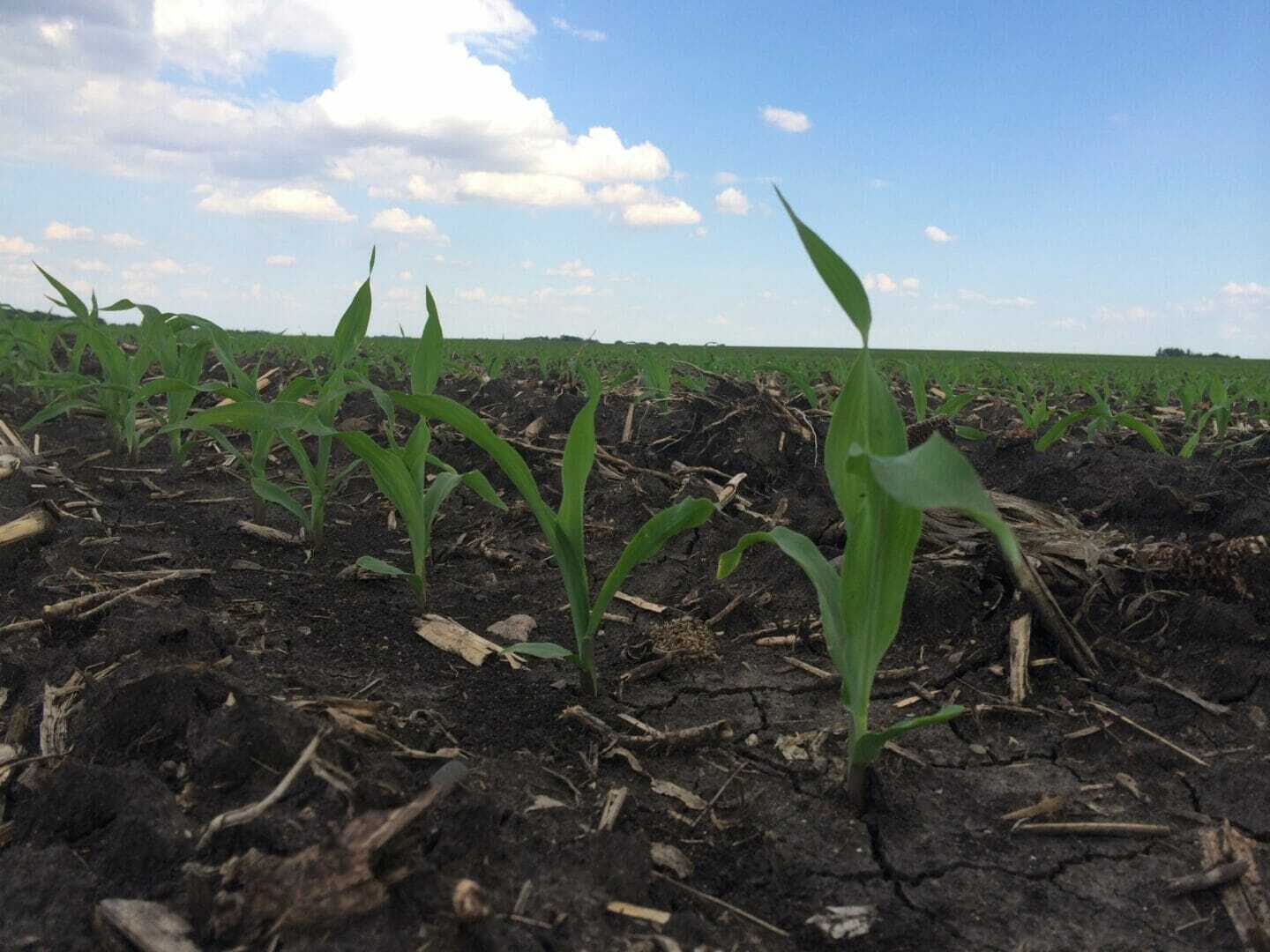
-
Latham Hi‑Tech Seeds
Execute Your Plan for Seeding Success

Vince Lombardi had many attributes that built his winning record, but I suspect it started with a vision of reaching the end zone. He then built and executed a plan. He kept it simple, often using the same play many times in a row. The power sweep was successful because the focus was on executing it flawlessly.
The same steps can be applied in your pursuit of leaving no yield in the field. Keep the vision clear. Build the plan. Master the basics, and you’ll hit the proverbial end zone of success.
Below are six basic steps to achieve success with alfalfa this growing season:
- Check emergence. Alfalfa is a survival of the fittest plant. Some research suggests 60% of seeds won’t become seedlings. Depending on your seeding rate, seeding bed, and weather, you should see 50 live plants per square foot within four weeks of spring seeding. AlfaShield™ improves survival chances.
- Check existing stands. The crown is fully developed after one full year, so we transition to stem count. Strive for more than 55 stems per square foot. If a field is not looking good and the stand is young enough, you should be able to no-till some supplemental alfalfa seed.
- Control weeds. Be the boss! Mortality rates are often high due to competition from aggressive weeds. Scout early and spray when label advises. The younger the weeds, the more vulnerable they are to herbicides. New seeding can be cut after about 60 days or so, which also can help manage certain weed populations.
- Be vigilant against pests. New seedings are vulnerable to leafhoppers, especially when they come from established fields nearby. Temperatures of 70+ degrees Fahrenheit also increase leafhopper reproduction. Eggs hatch in seven to 10 days and become adults in about 14 days. The damage to yield potential is often irreversible, so it’s important to be vigilant.
- Cut it short for best quality. A tremendous amount of research has shown a cutting height of two inches is the most economical and provides the best forage quality (See graphs below.) That is, as long as you don’t have rocks and gopher mounds!
- Feed the plants. Potash equals plant performance. Every dry matter ton of alfalfa removes about 50 to 60 pounds of potassium per acre. Consider adding sulfur, boron and zinc. Testing soil and tissue help you develop the best fertility program. Most growers apply supplemental fertilizer after first cutting and third cutting for best results.
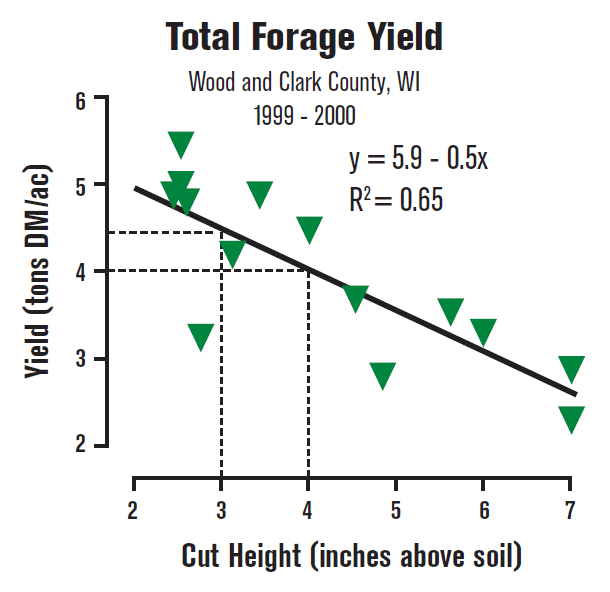
Research on ideal cut height. 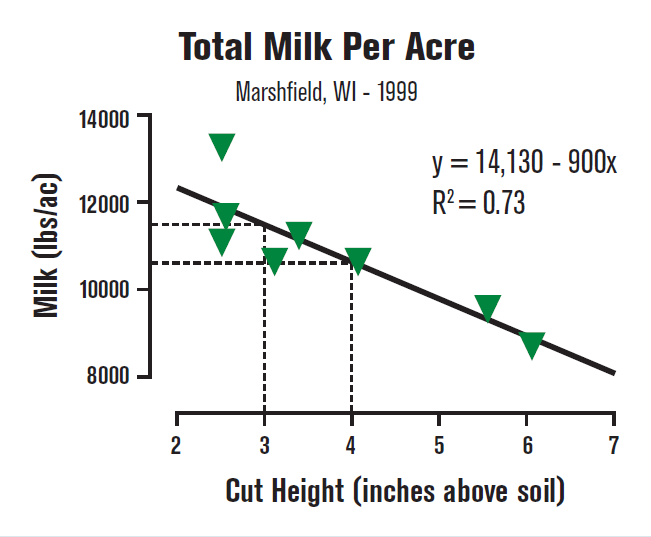
Research on ideal cut height. -
Latham Hi‑Tech Seeds
Gathering Planting Data Sets You Up for Success All Season Long
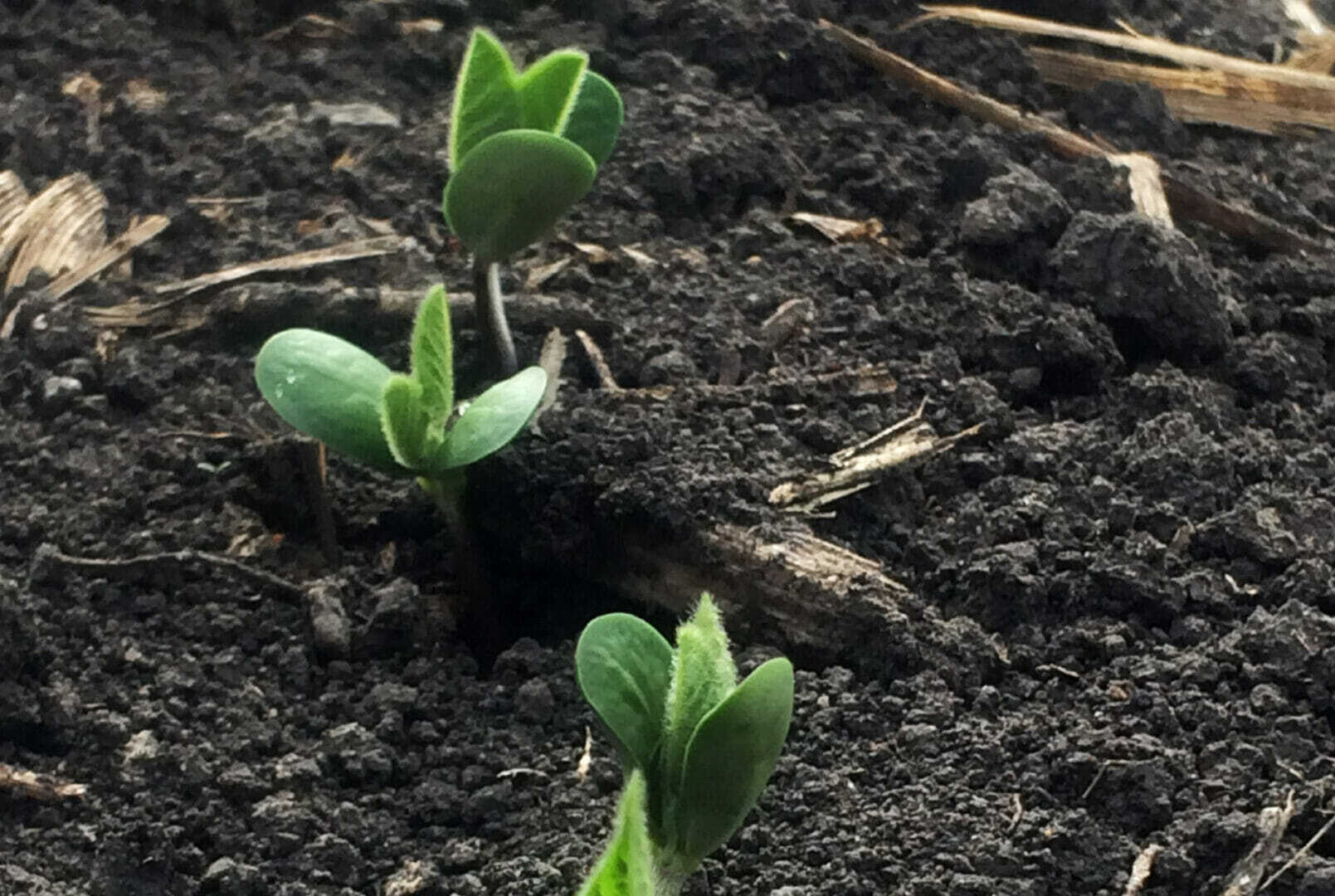
Planting really is the most important operation in terms of seeing your best yield potential. We have tools at our fingertips that can make farming a little easier during the rest of the season.
Use planter maps on-the-go to your advantage. Some of the best maps to watch as you’re planting are the singulation/spacing or downforce maps. Tracking spacing and downforce per row is a huge asset in the cab. Although it doesn’t replace routine checks, it helps you focus on trouble rows or on certain parts of the planter. Load these maps into your iPad, so you can go back to those areas throughout the season and note the impact planter issues or upgrades have.
Maintaining uniform seed depth and spacing is crucial. Uniform emergence can impact yields by up to 8 to 10 percent! Poor spacing creates unequal competition, so little corn plants can account for another 1 to 5 percent of your yield at the end of the season. Track how your planter performs. If you don’t have a monitor, you can still gather this information. Check your seed depth throughout the field. Stop in different soil types or areas where you know there may be some compaction. This will help you monitor the impact of seed depth and spacing throughout the season. Then next year you can plan how to adjust your planter for challenging conditions.
Monitor corn/corn fields for depth but also for seed-to-soil contact. Heavy residue with corn/corn fields can cause seed to be in contact with residue and create delayed emergence. Seeds absorb water much better from soil than from plant residue, so row cleaners and tillage preparation are crucial.
Pinpoint where the issues are. Today’s technology makes it easy to drop a pin where you are, so you can revisit that spot in the field. You can drop a pin on most any planter monitor, your phone, or an app like Data Forward™ that allows you to track your fields all season long. A pin also will let you make a late-season yield estimate or determine how much yield was lost or gained by fixing the specific issue that caused this problem area in your field.
None of us likes to learn the hard way. We certainly don’t want to make the same mistake twice! Take the time this planting season, or as you spray post-emerge herbicides, to make notes that can help you make better planting or management decisions next year.
-
Latham Hi‑Tech Seeds
Ask the Agronomist: Calendar Date vs Soil Temp
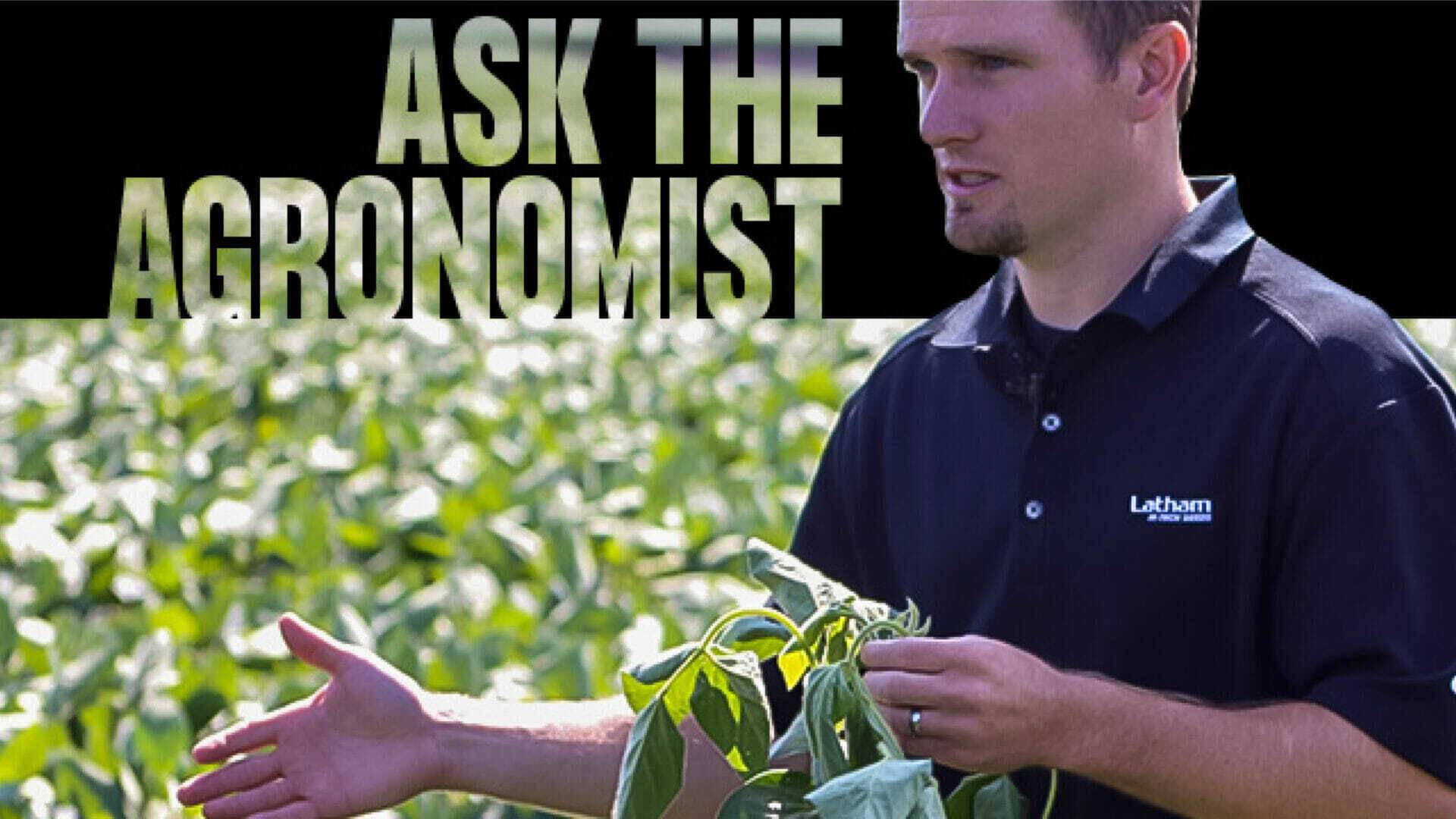
-
Latham Hi‑Tech Seeds
Spring Planting: Get it Right From the Start

“In farming, you only get one chance every year, so it’s worth it to do it right the first time.”
That statement is so very true. Below are a few things to keep in mind to optimize your corn and soybeans yields:
 Soil Moisture. Working ground when it is too wet leads to slabbing and clodding of the soil, so areas within fields dry at different rates. A kernel of corn imbibes, or takes in, about 30% of its weight in water during germination. When kernels in a row are exposed to varying amounts of soil moisture, their germination rates and emergence will vary from plant to plant. The result is uneven emergence, poor early growth and potentially severe stand loss. Soybeans need more water at germination, taking in about 50% of seed weight on average. As with corn, good seed-to-soil contact is critical, so avoid cloddy conditions.
Soil Moisture. Working ground when it is too wet leads to slabbing and clodding of the soil, so areas within fields dry at different rates. A kernel of corn imbibes, or takes in, about 30% of its weight in water during germination. When kernels in a row are exposed to varying amounts of soil moisture, their germination rates and emergence will vary from plant to plant. The result is uneven emergence, poor early growth and potentially severe stand loss. Soybeans need more water at germination, taking in about 50% of seed weight on average. As with corn, good seed-to-soil contact is critical, so avoid cloddy conditions.Soil Temperature. Corn germinates best when soil temperature is close to 50° F. Approximately 120 growing degree units (GDU’s) are required for corn to emerge. During periods of cool temperatures, it can take several days to achieve those GDU’s. Once a corn seed germinates, it can exist for about 14 days on the energy that is contained in the endosperm. Under ideal conditions, the seed will emerge and develop a root system in much less than 14 days. Most researchers agree that soybeans emerge best when the soil temp is 55° F or warmer. Avoid planting soybeans if the temperature is below 55° and a cold rain/weather event is expected within 24 hours after planting.
Planting depth: Soybeans respond best when planted at 1¼ to 1½ inches deep and should never be planted deeper than 2 inches! Remember, a soybean seedling must push that cotyledon through the soil as it emerges. The soybean seedling requires much more energy than a corn seedling with its narrow coleoptile (shoot). Target depth when planting corn is 2.5 inches. Planting corn shallow is as bad as planting soybeans too deep because nodal roots will not develop properly and “Rootless Corn Syndrome” may result.
Soybean inoculant: Old-timers say if soybeans have been planted in a field within the past four to five years, then an inoculant is not necessary. However, recent studies and more advanced inoculant formulations show otherwise. Using inoculants in light, sandy soils, as well as weather-stressed (flood, drought, etc.) fields have shown increased plant health and improvements in overall yield. Consider running side-by-side trials on your farm to see if inoculants will work for you.
Problems like sidewall compaction, surface crusting, herbicide injury, seedling insects and seedling diseases can all lead to delayed plant and root development. These, and many others, can all cause uneven emergence and poor stands in corn and soybean. That’s why it’s important to control what you can to set up your crops for success!
Stay safe this planting season. Did you enjoy this article? We want to (TECH)talk with you! Sign up for our newsletter to receive agronomy videos, articles (and delicious recipes) in your inbox! We’ll TALK soon.
-
Latham Hi‑Tech Seeds
#AsktheAgronomist: What is Optimal Planting Depth for Corn?
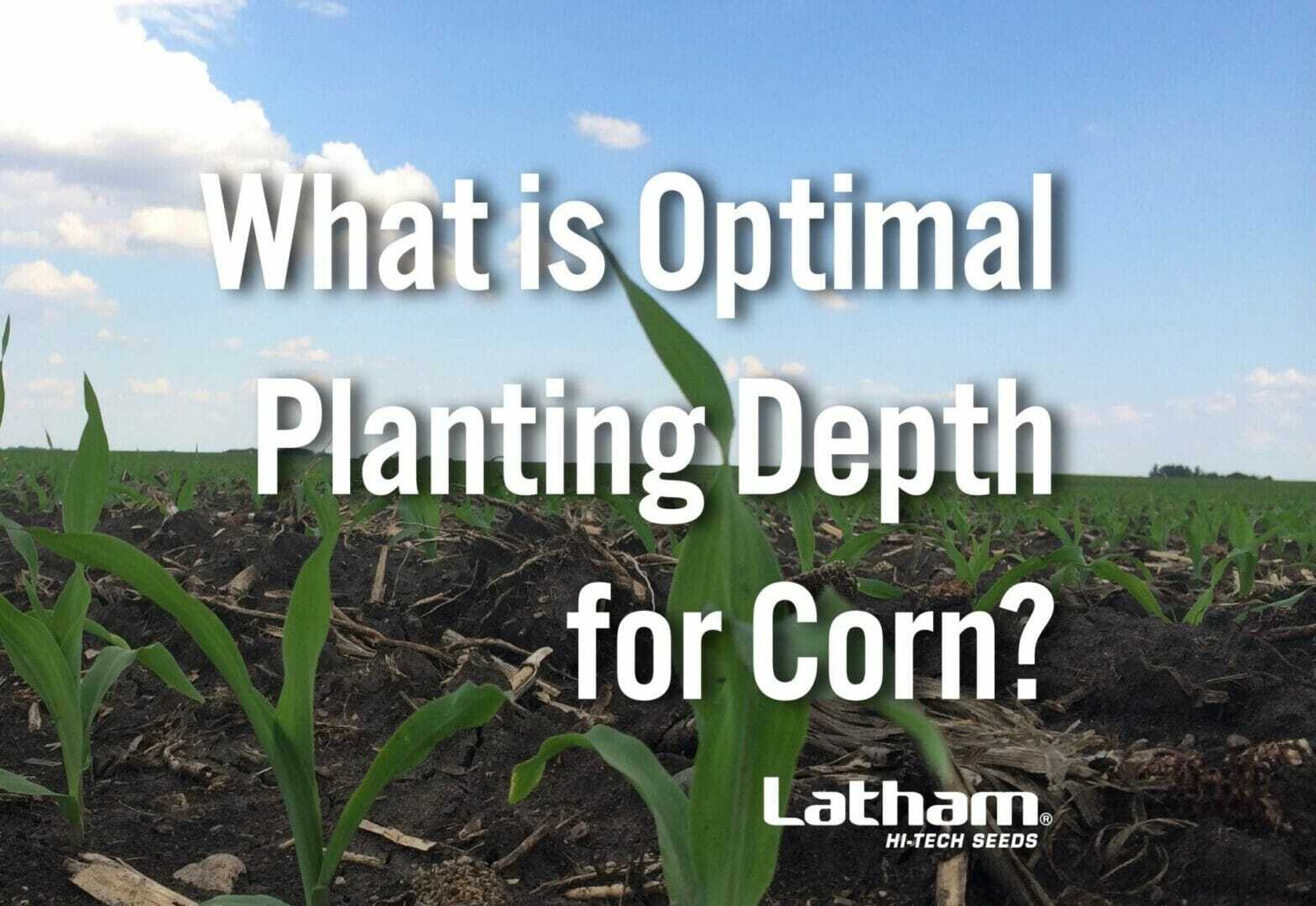
Join Corn Product Manager Lyle Marcus and Pre-Commercial Development Manager Bob Foley as they discuss optimal planting depth for corn and other considerations for emergence success.
-
Latham Hi‑Tech Seeds
Tips for Assessing Spring Alfalfa Stands
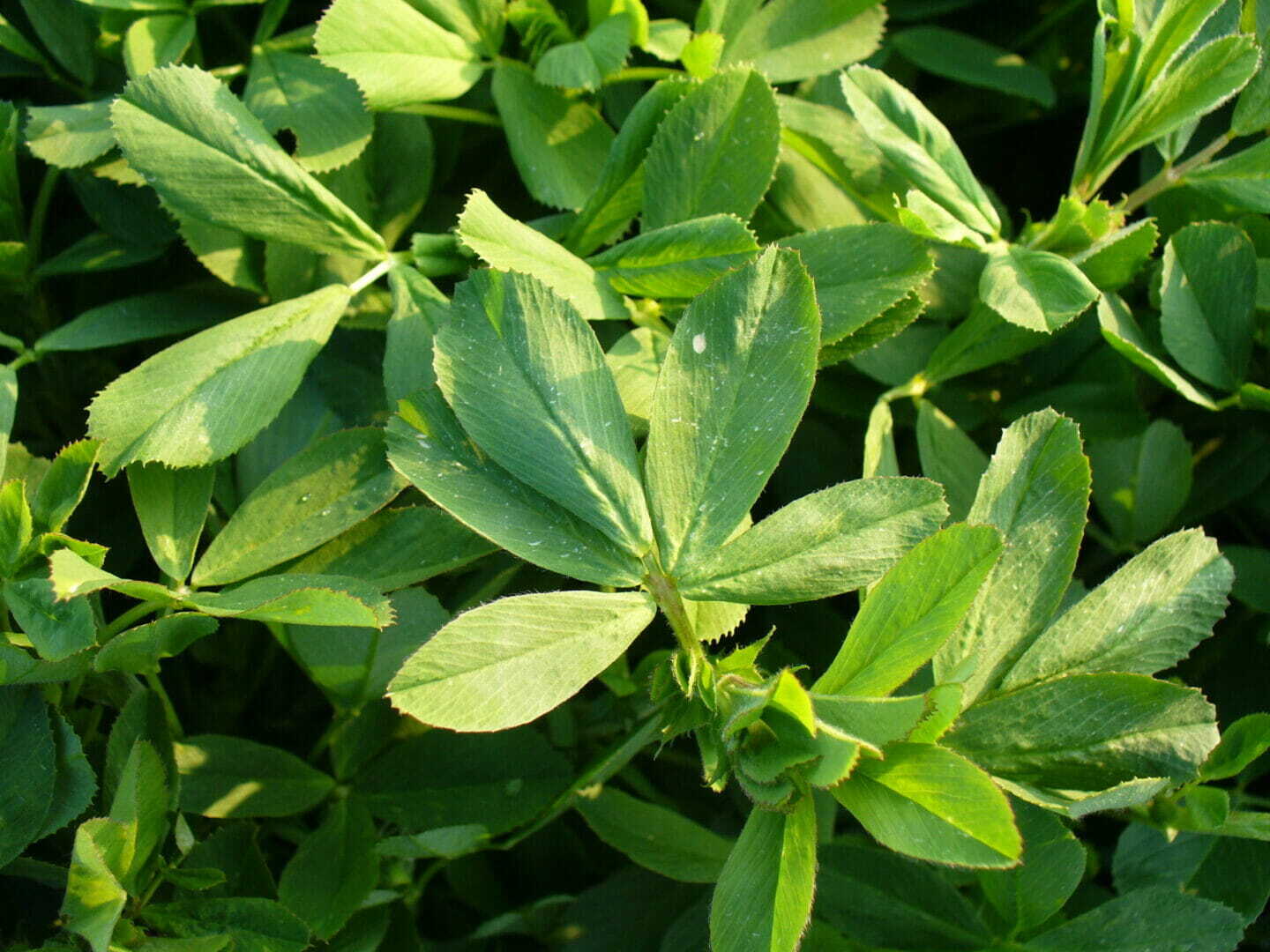
If you grow alfalfa, you have experienced winter kill.
Alfalfa winterkill is a complex matrix of many factors: variety, fertility, general stand health, previous fall weather conditions, snow cover, winter temperatures, and spring weather patterns. My own experience has proven one type of winterkill is rarer, while the other is more common.
The rarer situation occurs when conditions are ideal for the alfalfa to overwinter, but temperatures warm up in late winter or early spring and are followed by several freeze-thaw events. The rapid thaw causes the snow to melt into and around the permeable alfalfa crown and tap root. The sudden, deep freeze crystalizes that moisture around the crown. I had a case where this type of weather caused the crown to pop two to four inches out of the soil! While this is an extreme example, there was nothing anyone could have done to save this alfalfa. It was an act of nature.
The other type of winter kill also results from Mother Nature but is more subtle and common. This type of winter kill is a combination of many factors, such as a poor and/or diseased stand, a stand with low fertility, a stand that has limited insulating snow cover throughout winter months, and a cheap alfalfa variety with a lower winter hardiness score.
The effects of winterkill can be quite variable in the field due to slopes, soil types, fertility and other factors. If you see a reduced stand after spring green up, walk around the field to evaluate whether it’s time to rotate the crop.
Tips for assessing spring stands:
- Watch for green up; be patient.
- If the alfalfa isn’t greening up in some areas of field, dig roots and split them. If the average stem density is low in some areas of field but not in others, consider interseeding something as a quick rescue like Italian ryegrass. It establishes quickly, provides tonnage, is good quality and allows you to capture the value of the alfalfa that is still alive.
- Calculate yield potential and consider rotating the crop. The University of Wisconsin – Madison Extension provides a calculator to help estimate yield based on the number of stems in a square foot. Once the stem number is determined, use this formula to calculate the yield potential of that stand: Yield (tons/acre) = (Stems/ft2 x 0.1) + 0.38
For example, an alfalfa stand with 50 stems per square foot would have a yield potential of 5.38 tons per acre. Keep in mind that soil, nutrient deficiency, insects, diseases and other factors may affect the actual yield.
-
Latham Hi‑Tech Seeds
Planting Depth is Critical to Plant Performance
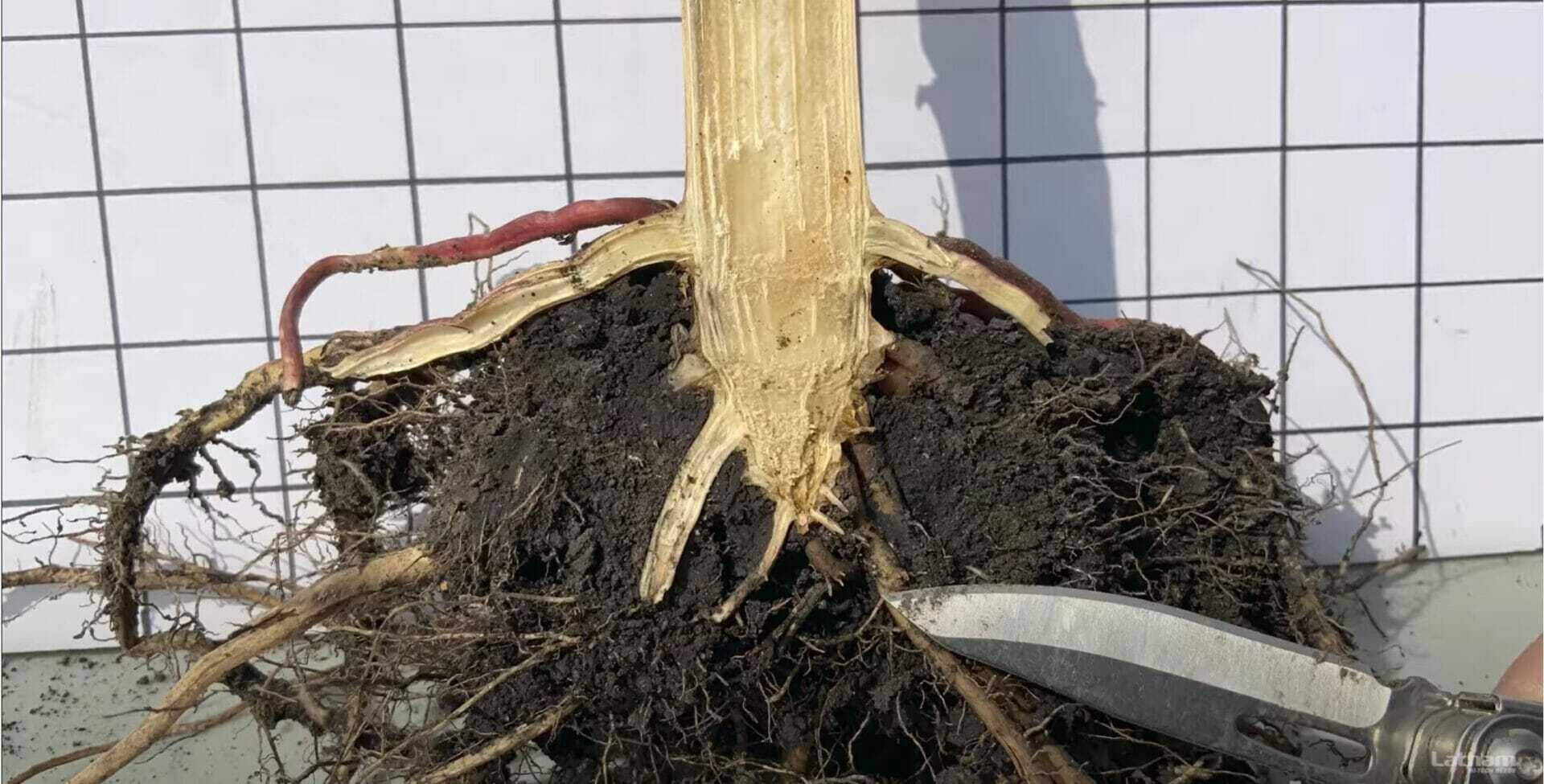
-
Latham Hi‑Tech Seeds
Planting Depth with Lyle Marcus
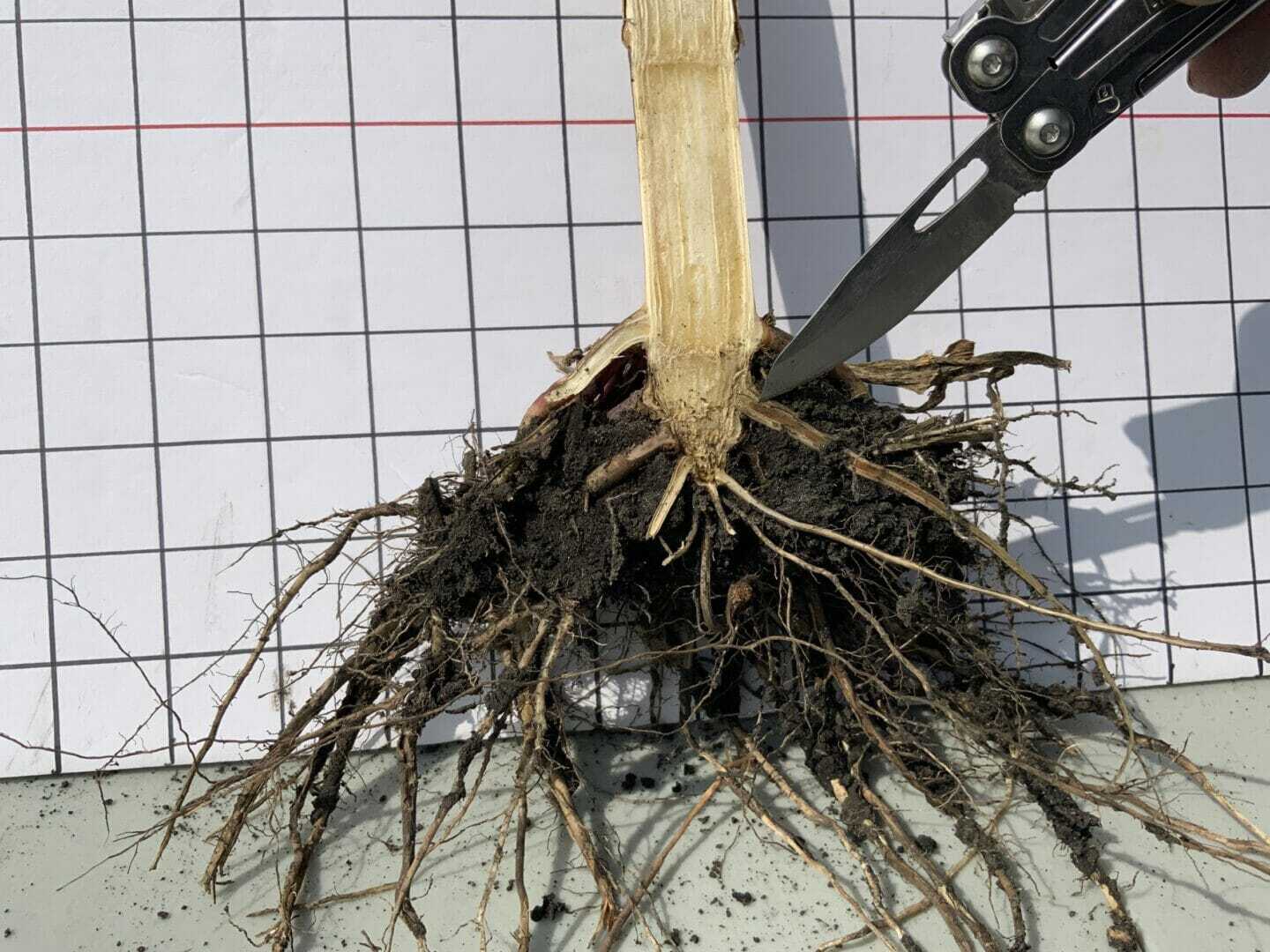 Tune in for planting depth reminders from our Corn Product Manger, Lyle Marcus! Lyle discusses three different corn planting depths: 1.5 inches, 2.5 inches and 3 inches. Watch the video and learn why planting depth matters.
Tune in for planting depth reminders from our Corn Product Manger, Lyle Marcus! Lyle discusses three different corn planting depths: 1.5 inches, 2.5 inches and 3 inches. Watch the video and learn why planting depth matters. -
Latham Hi‑Tech Seeds
Ask the Agronomist: Does Corn Seed Size Matter?
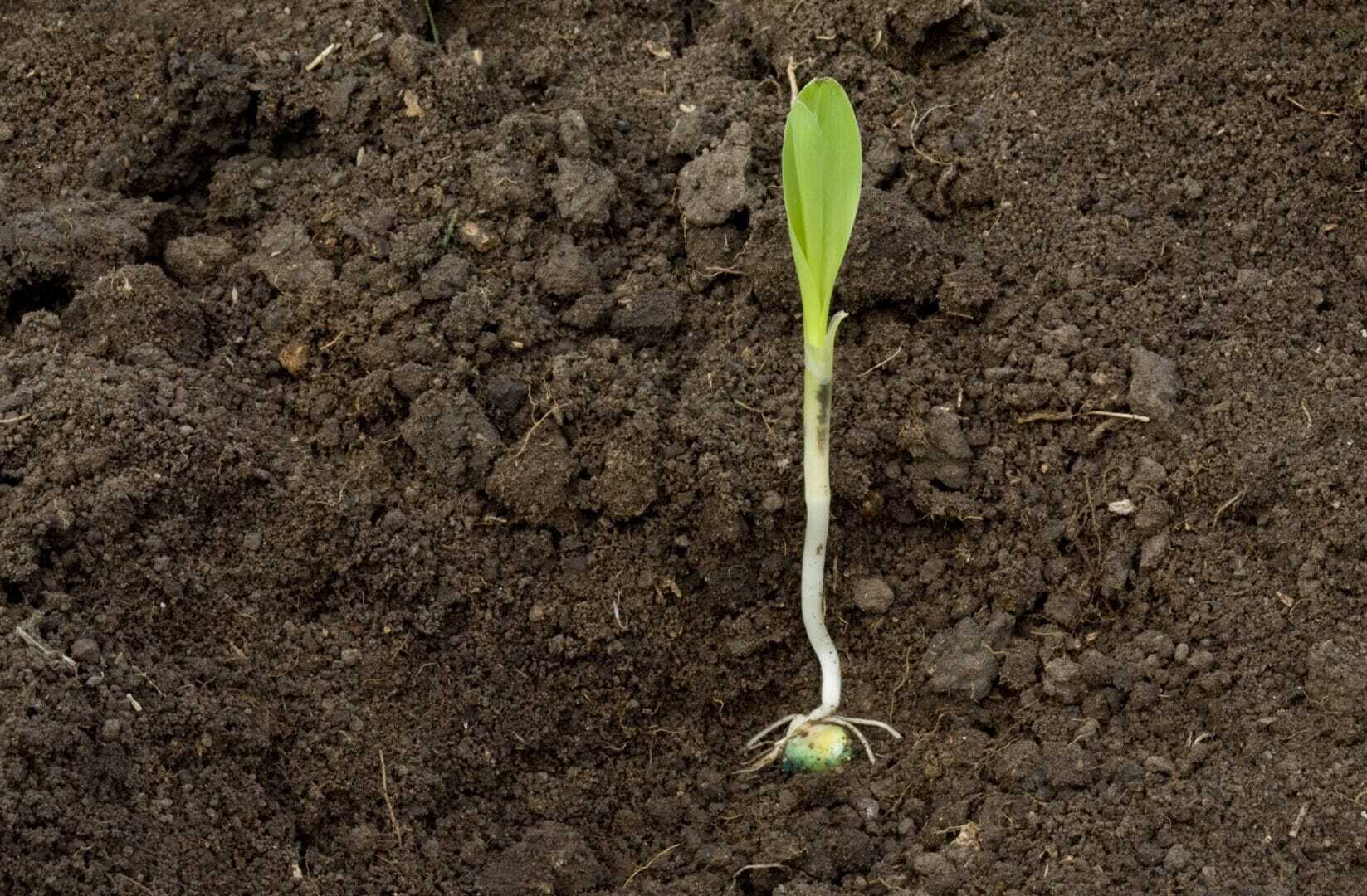
Tune in as we discuss if corn seed size matters. From germination to emergence, learn the importance of an even stand and how seed size can play a role. #LathamSeeds
:45 – Topic introduction
2:40 – Emergence & germination
5:20 – Seed placement
9:20 – Seed genetic potential
10:10 – Seed orientation
